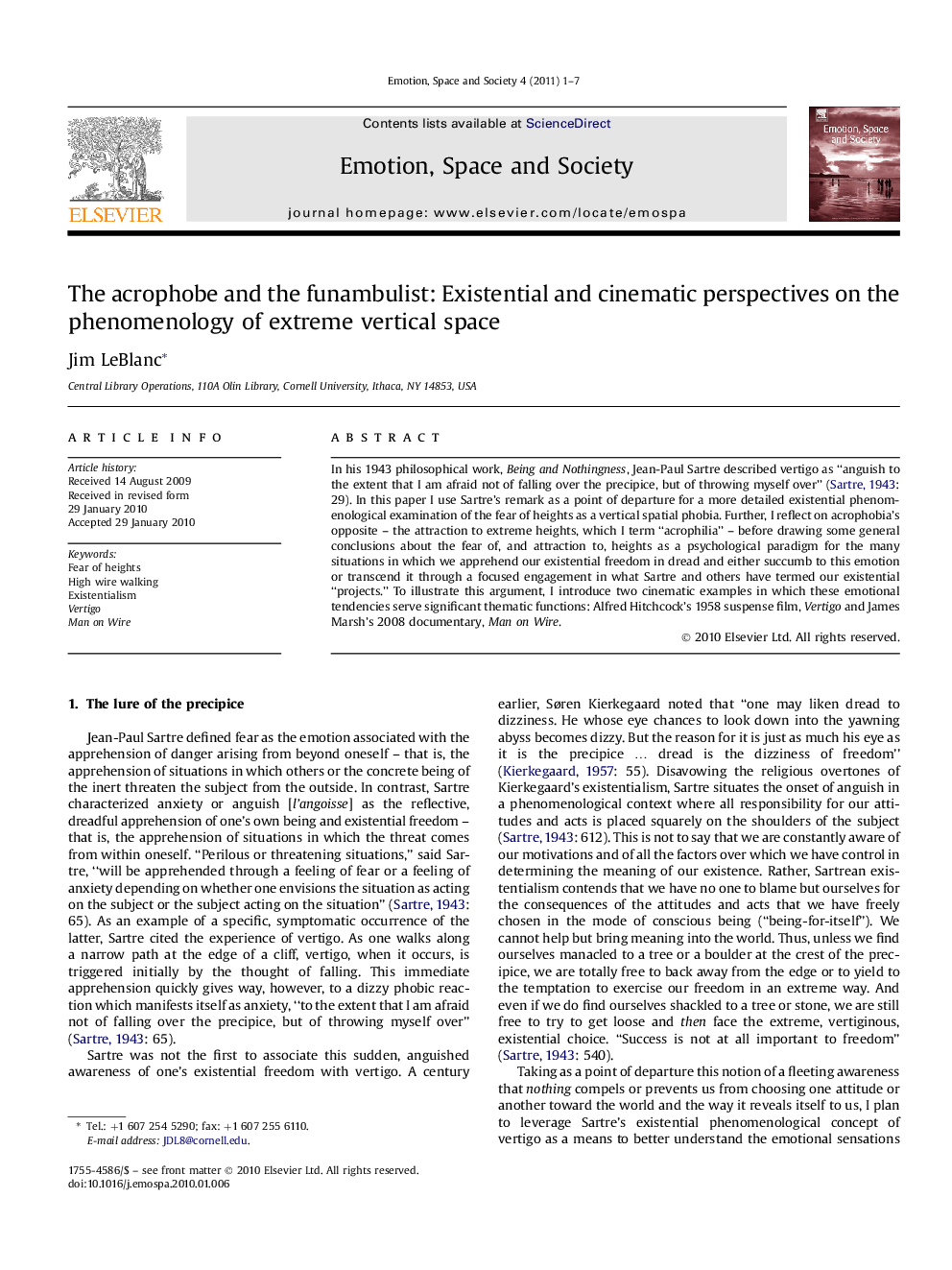| کد مقاله | کد نشریه | سال انتشار | مقاله انگلیسی | نسخه تمام متن |
|---|---|---|---|---|
| 946903 | 926229 | 2011 | 7 صفحه PDF | دانلود رایگان |

In his 1943 philosophical work, Being and Nothingness, Jean-Paul Sartre described vertigo as “anguish to the extent that I am afraid not of falling over the precipice, but of throwing myself over” ( Sartre, 1943: 29). In this paper I use Sartre's remark as a point of departure for a more detailed existential phenomenological examination of the fear of heights as a vertical spatial phobia. Further, I reflect on acrophobia's opposite – the attraction to extreme heights, which I term “acrophilia” – before drawing some general conclusions about the fear of, and attraction to, heights as a psychological paradigm for the many situations in which we apprehend our existential freedom in dread and either succumb to this emotion or transcend it through a focused engagement in what Sartre and others have termed our existential “projects.” To illustrate this argument, I introduce two cinematic examples in which these emotional tendencies serve significant thematic functions: Alfred Hitchcock's 1958 suspense film, Vertigo and James Marsh's 2008 documentary, Man on Wire.
Journal: Emotion, Space and Society - Volume 4, Issue 1, February 2011, Pages 1–7